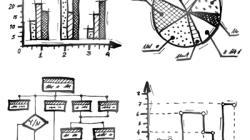To provide the best support to the business leaders, FP&A needs to quickly leverage the accounting information at hand. This article covers three critical aspects of telling the business story behind the numbers.
This series of articles focuses on blowing up this stereotype by demonstrating how Finance in general and financial planning and analysis (FP&A) in particular can change its language, use the right part of the brain to throw light on the most important business drivers, revive figures and make them tell a story that is easy to perceive and take action on.
There are so many great stories to be told in FP&A! Due to technological advances, FP&A professionals now have access to advanced analytics, flexible dashboarding and effective data visualisation tools.
Knowing your numbers is a good starting point for an FP&A professional. But it is also required to know how to present the findings to others.
The purpose of Financial Planning and Analysis is not to build perfect forecasts and financial solutions. The purpose is simply to make better business decisions. Numbers themselves can support decision-making, but the story convinces people to make the right decision. This article will discuss best practices in data visualisation that resonate with financial and non-financial people alike.
Kaplan and Norton’s Balanced Scorecard is a familiar concept, still widely used today, often falling to FP&A or Strategic Planning teams to create and then monitor. This process can be very challenging and problematic to deliver. This blog focuses on some practical observations and tips regarding the implementation of a scorecard, designed to help you get buy-in from the rest of the organisation.
Pagination
Subscribe to
FP&A Trends Digest

We will regularly update you on the latest trends and developments in FP&A. Take the opportunity to have articles written by finance thought leaders delivered directly to your inbox; watch compelling webinars; connect with like-minded professionals; and become a part of our global community.






